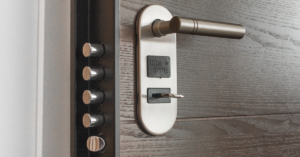The right kind of fastener can have a world of difference on any given application. Choose the wrong one, and you may not have the tensile strength needed to keep those two pieces together. This is why bolts are the way to go for heavy-duty purposes.
You are going to run into hex head bolts more than a few times, across a litany of different applications. Before you start using these great fasteners, you need to know all that there is to know about the hex head screw.
What are Hex Head Screws Used for?
Before you go out looking for hex head screws from a vendor like RS, it helps to know what these fasteners are used for. Primarily, you will find these bolts for construction and automotive businesses, though there are other areas and applications for which they can be used.
You’ll most commonly find them in construction projects, the implementation of road infrastructure, the building and repair of bridges and buildings, in engineering applications, and even in the automotive industry. Their purposes and uses are nearly limitless, further underscoring the importance that these fasteners can have.
How do They Work?
Identifying hex head bolts is simple because they have a distinctive look. The head of the bolt is a hexagonal shape, which is used because of the superior grip it offers. They typically come in either partially or fully threaded types, though they are available in a litany of materials (see below).
Knowing how they work is key. They can be used either with nuts or on pre-tapped holes; it all depends on the intended application. There is a litany of tools you can use for tightening, though ratchet spanners and socket sets are the most common you will run into. The head provides superior grip strength, which reduces the chances of slippage, and makes it easier to install and remove them in no time at all.
Hex Head Bolt Types
The head of these fasteners is the same (if it were different, it wouldn’t be a hex head, would it?). The main differences between two hex head bolts come in the threading and the material type. Let’s look at the two main thread types of the hex head bolt.
Partially threaded. As the name implies, the length of the screw only has partial threading, typically starting about ¾’s of the way up the body. These are used for intermediate strength requirements, but the construction of the bolt ensures that the shank (the unthreaded part) will not weaken.
Fully threaded. There is also the fully threaded hex head screw. As the name implies, there is threading over the full length of the screw’s body. Because of the additional thread strength, these are used for heavy-duty applications. Just make sure that you use these in pre-threaded holes or you might have a tough time.
Hex Head Bolt Materials
There are three main material types to the hex head bolt. You will find different finishes like clear passivated, black oxide, zinc, and bright zinc-plated. That said, these are the three main material types you will encounter.
Steel. The most common material type. Steel strength ranges from EN8 to EN16, with the higher numbers being the strongest.
Stainless steel. Very similar to steel with the biggest difference being corrosion resistance. These can be used both indoors and outdoors, providing a better-looking finish than other hex head types.
Brass. Maybe the least common of the different hex head screw types. That said, they also have great corrosion resistance and provide a unique aesthetic compared to the steel varieties.








![[noblocc] Kicked for Being AFK: Understanding the Reasons and Solutions](https://businessrole.co.uk/wp-content/uploads/2023/09/sddefault-300x225.jpg)





+ There are no comments
Add yours